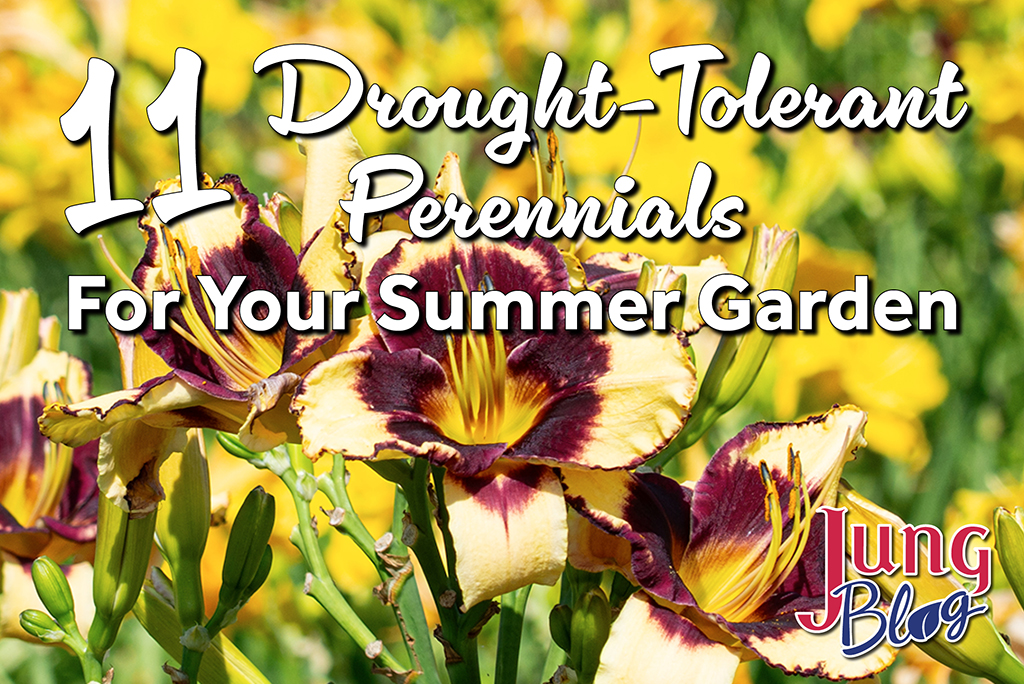
Updated: July 17, 2025
As I’m typing this, the sound of rain fills the early morning air, providing the garden with another dose of moisture. We’ve come to expect fluctuating weather, so growing plants that can withstand those changes is important. Using perennials with drought tolerance is a great way to create a low-maintenance landscape that brings beauty and function to your garden. Mid-summer is also when certain perennials start looking worn, especially during dry spells, so now is ideal for finding gaps in the garden that could use a fresh look.

Whether you’re growing flowers or foliage plants, drought tolerance can be found among many plants. The key is making sure they receive supplemental watering while becoming established. Here are some ideas to get you started!
Agastache
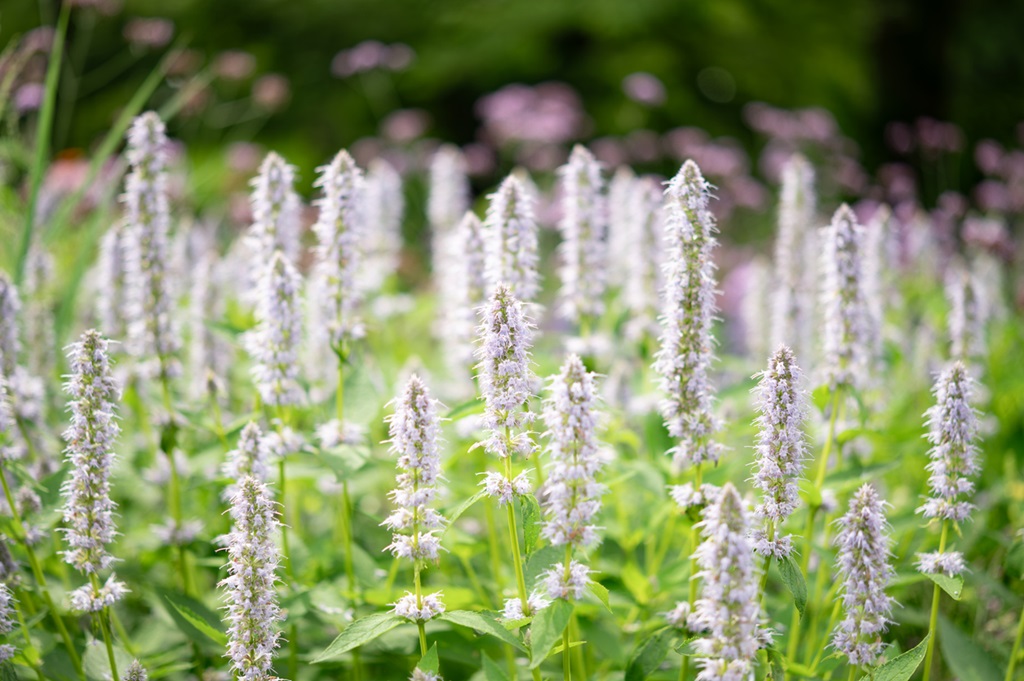
While not as well-known, Agastache is becoming more popular as gardeners see their many uses, like attracting bees and butterflies. The bright orange flowers of Poquito™ Orange create a long-lasting flower show, and the fragrant foliage helps keep the deer away. Black Adder gives you smoky-lilac blooms for a different color starting in mid-summer. These plants aren’t afraid of heat, so you can add them to tough spots in full sun.
Butterfly Weed
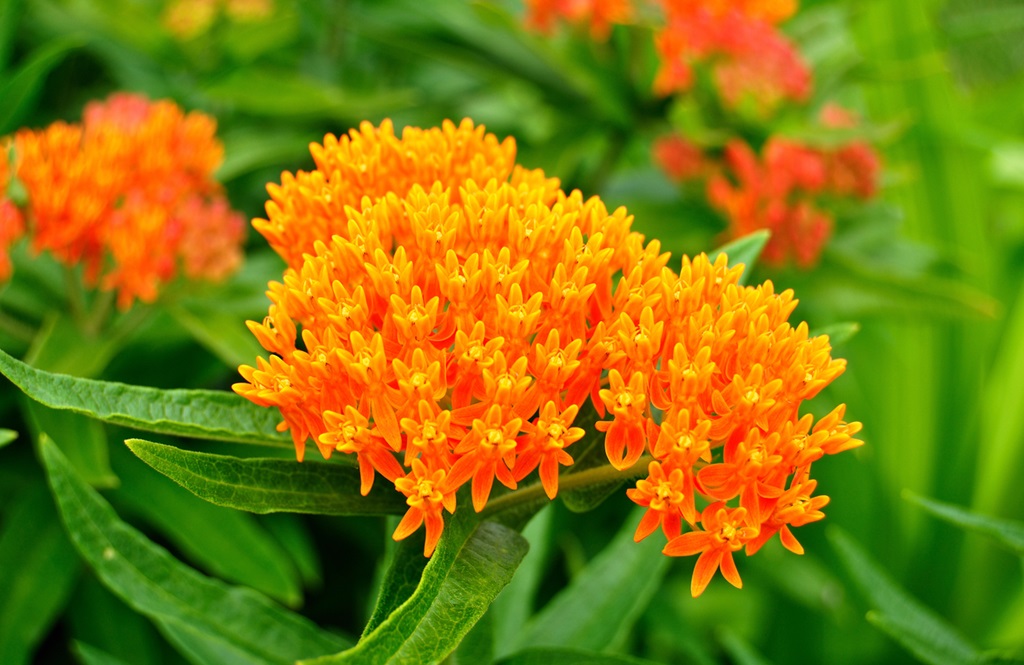
I see these blooming every year and wish I had more of them. Their bright orange flowers really pop, especially when you plant them near other natives, like Echinacea. Butterfly weed emerges later than most perennials, so it requires patience in spring, but the show in July and August is stunning! And it attracts butterflies! While the flowers are long-lasting, the unique seed pods are also attractive. These plants are often scattered in native gardens or groups for even more color.
Daylilies
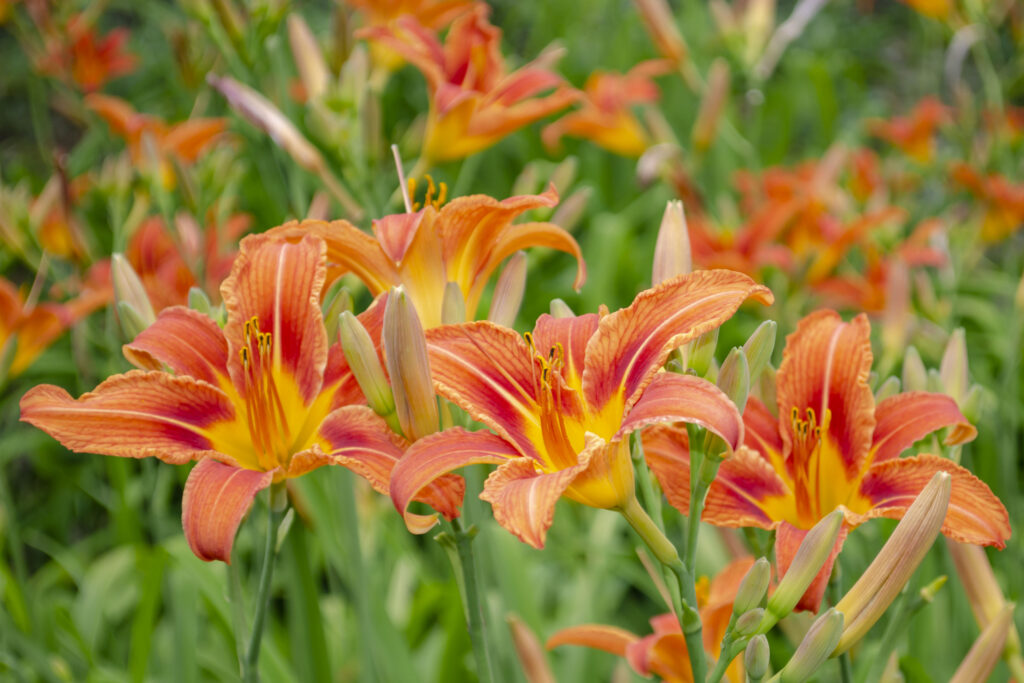
You’ve probably seen yellow daylilies, but there are countless other colors of this plant that provide the same toughness. In fact, over 1,000 varieties of daylilies exist with more colors than we can imagine. They also come in different sizes, usually ranging from 1-3 ft tall, so can they remain short or add extra height to your beds. Consider mixing different colors to create a kaleidoscope of color!
Echinacea (Coneflower)
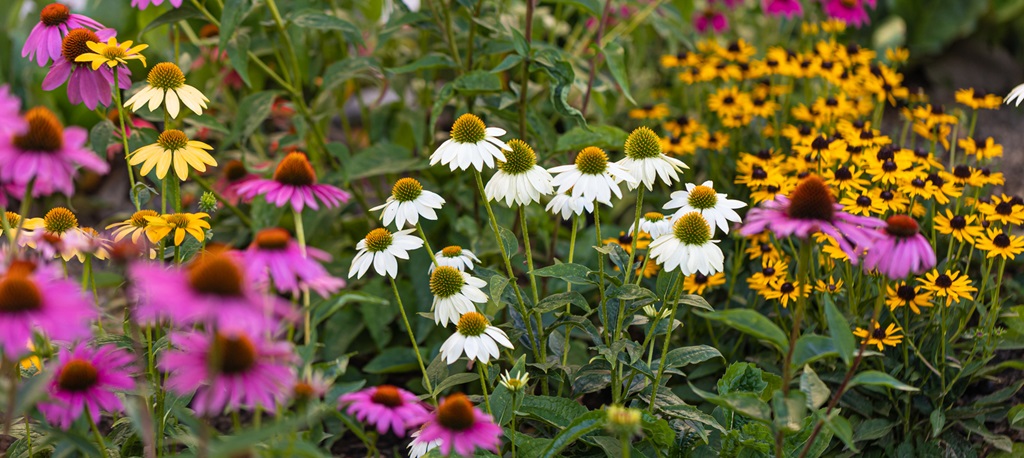
Modern breeding has allowed these natives to be more colorful and easier to grow. From pink to white and even green, coneflowers look great in landscape beds or containers for seasonal displays. These shorter plants are perfect for filling in gaps and adding a mix of color to borders while remaining compact and well-branched.
Lavender
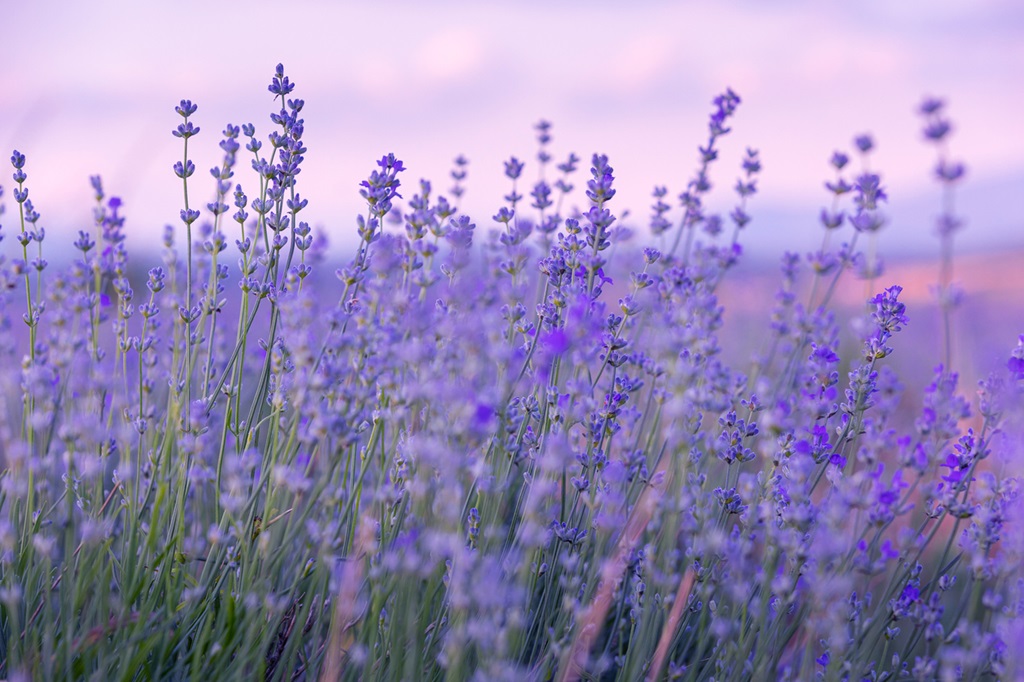
This Mediterranean herb loves dryness, so it’s a nice option for those of us with sandy soil. Like other herbs, lavender’s foliage is fragrant and provides additional interest. Lavender is often grown as a perennial but is also popular in containers and annual beds, making it versatile. If you have an area with dry and hard soil, lavender could be the solution.
Nepeta (Catmint)
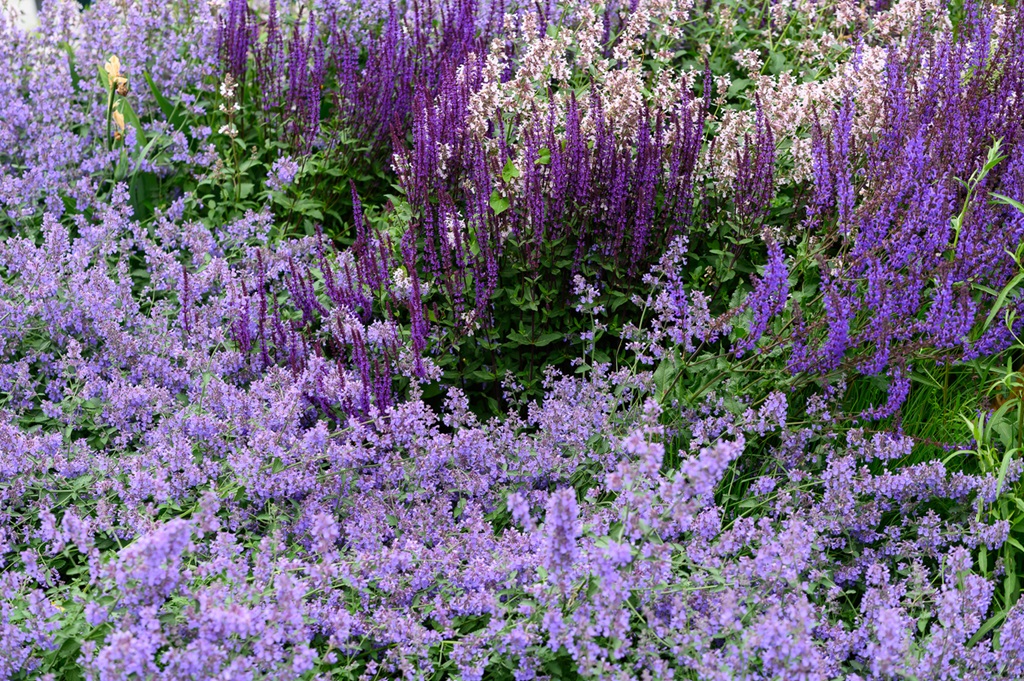
Whether you’re growing in clay, sand, or anything in between, Nepeta seems to be unstoppable in a good way. Every June, their purple blooms cover the plants to create drifts of color along borders and other garden areas. Cat’s Pajamas is a compact variety with blooms from top to bottom, giving you more flowers in less space. You can also grow varieties that are slightly larger to cover empty spaces. Another wonderful part of catmint is the aromatic leaves and reblooming ability after their initial bloom in late spring and early summer.
Ornamental Grass
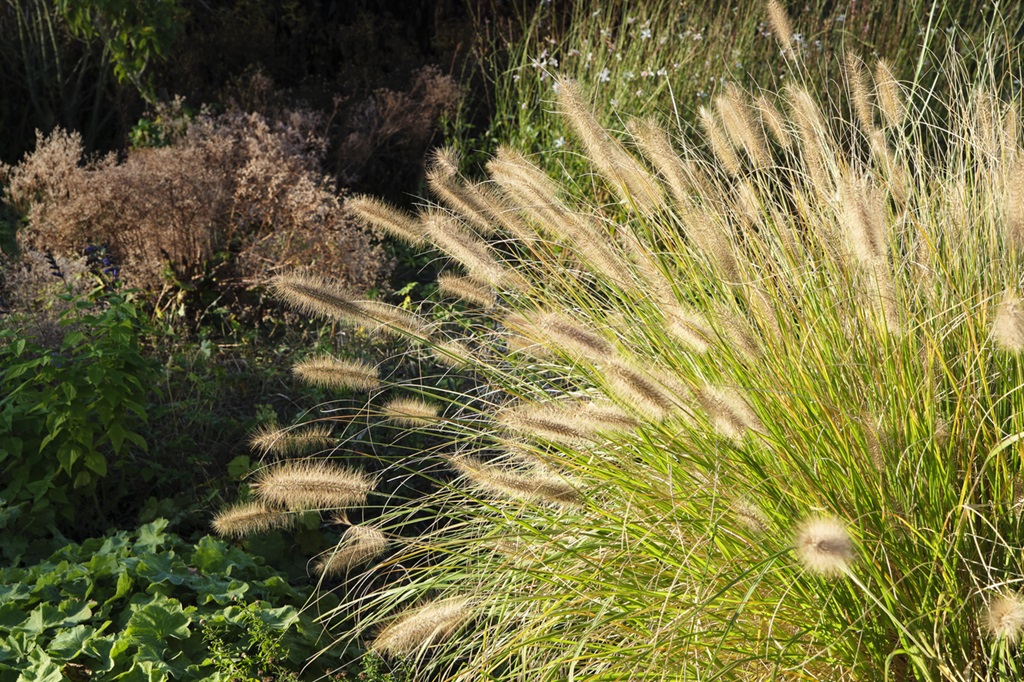
For a long time, I didn’t appreciate the uniqueness of these plants, but their texture and graceful appearance are stunning in all four seasons. They come in various sizes, shapes, and flowers to provide an excellent contrast with other perennials and shrubs. Many of them will also stand tall in winter, though heavy snow can knock them down occasionally. If you want tough perennials that add year-round structure, grasses may be right for you. Some grasses are large enough to be a specimen, while others look best in groups. They’re also helpful in filling in large spaces.
Rudbeckia
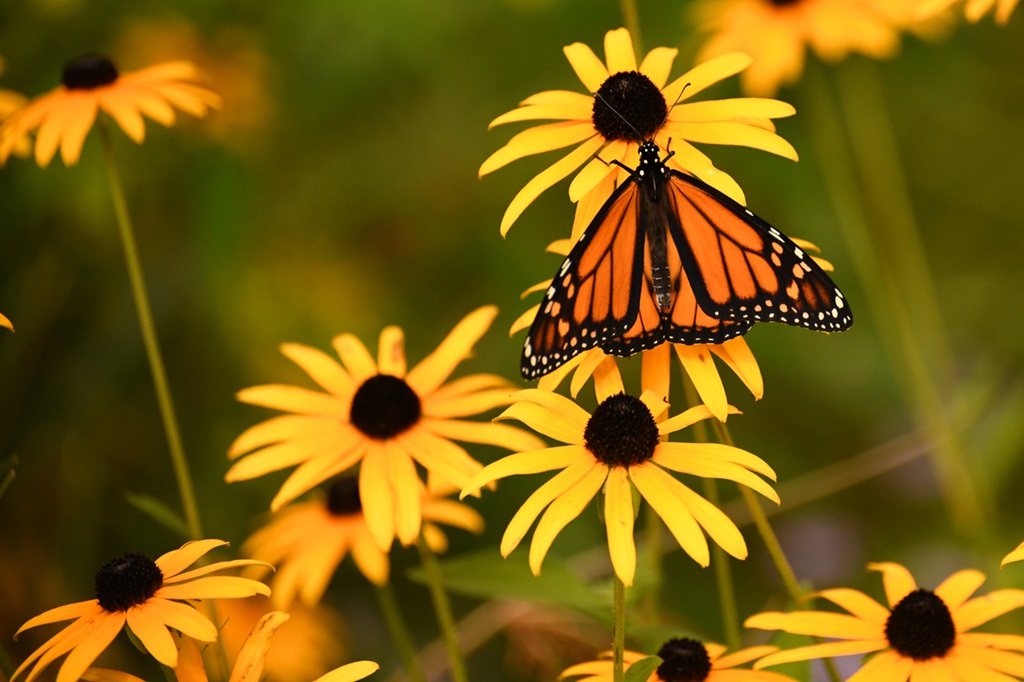
This classic native is an outstanding plant for late-season color. It’s usually planted in groups, but you can also spread it out around your garden. While it does self-seed, the extra plants are easy to remove if desired. During winter, birds are attracted to the seedheads for food, so the wildlife also enjoys their presence. Plant these next to other late-season bloomers, like Russian sage and sedum, to add a grand finale of color in late summer and fall.
Russian Sage
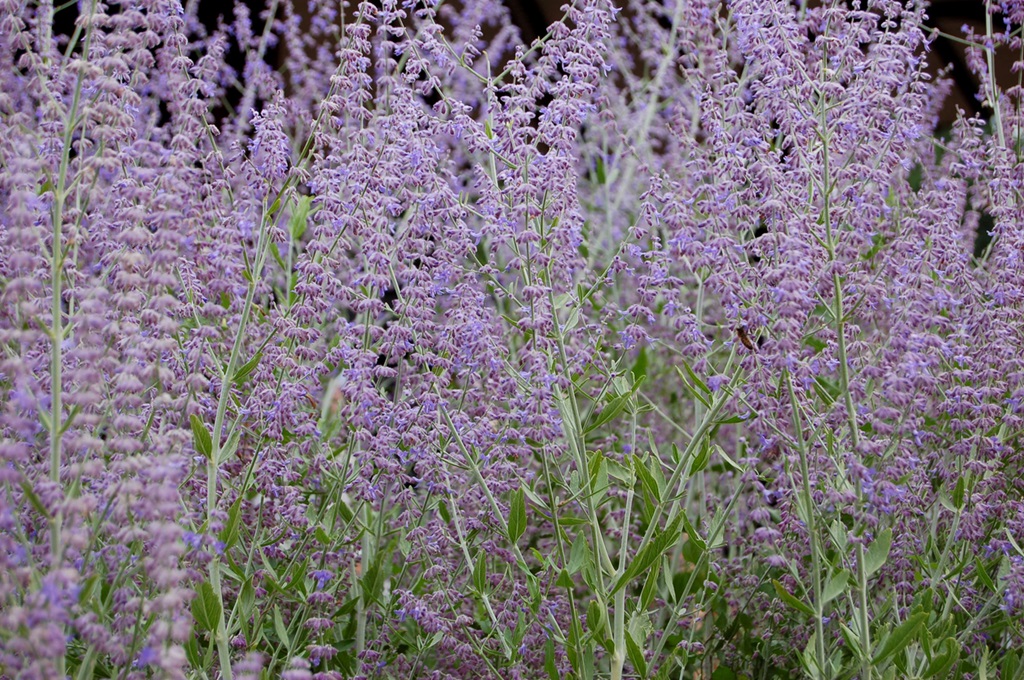
As summer progresses, Russian sage’s airy blooms stand tall and contrast with the fragrant, silver foliage. The flowers emerge in July and continue adding color until frost, giving you a long season of interest. In the last few years, compact varieties of Russian sage have become popular, including Denim ‘N Lace. These look great as specimens or planted in groups along a border or foundation bed. Since the leaves are aromatic, deer tend to avoid them.
Sedum
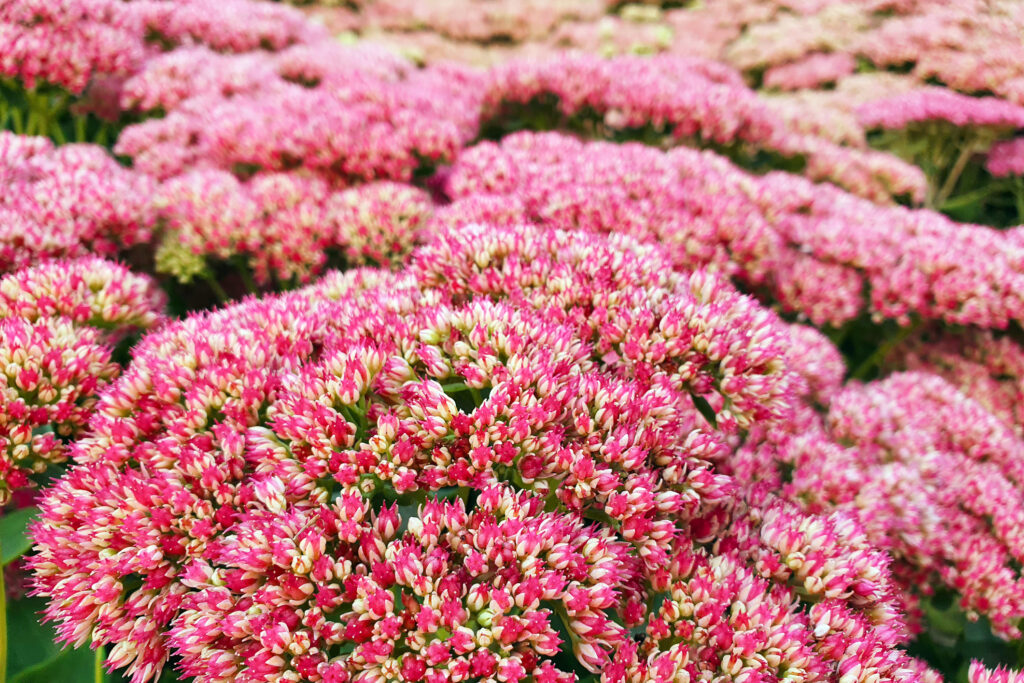
Looking for versatility? Sedum will deliver. Whether you’re growing upright varieties, like Autumn Joy, or creeping plants, this plant group has no shortage of colors and textures. Use them in rock gardens, along sidewalks, or between stepping stones to add a carpet effect. Mix them around other perennials to fill gaps and suppress weeds.
Sempervivum
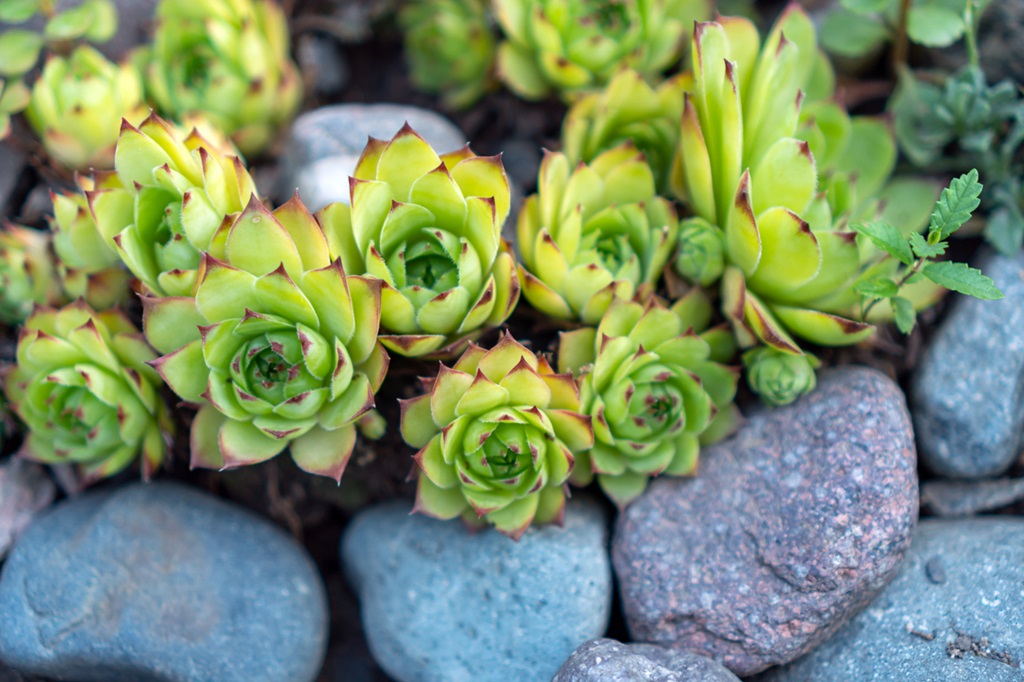
These little succulents are known as Hens & Chicks for their ability to produce new plants from the mother plant. In the landscape, these can be added to rocky crevices, retaining walls, and rock gardens to create a unique look and show off the thick succulent leaves that change color during each season. Those leaves hold lots of water, allowing you to enjoy them without fuss. And that’s not all! When you see the little offshoots appearing from the plant, they can be cut off and replanted to share with your friends or have more plants in your garden.

These are just a few plants that offer drought tolerance. While these plants prefer lots of sunlight, you can also find ideas for dry shade here.
Other Recommended Reading

- New 2024 Summer/Fall Garden Catalog Review
- Bee Gardens: Cultivating Pollinator Paradises
- Shade Garden Design Ideas
- 15 Best Plants for Pollinators
- Perennial Planting: How To Overcome Difficult Planting Sites
At Jung Seed Co, we strive to be your go-to guide for all your gardening needs. Our YouTube channel, The Garden Doctor by Dick Zondag, is where he provides gardening tips for all levels of gardeners. When you need reliable gardening advice, turn to the trusted experts at Jung.
View our new catalog online or browse our website for your gardening favorites. Sign up for our weekly email to receive info on new products, exclusive deals, and specials. Join our Facebook page to discuss all things gardening!
About the Author: Matthew Olson is a professional horticulturist and garden writer. He has a bachelor’s degree in horticulture from UW-River Falls and is a certified professional with the Minnesota Nursery and Landscape Association. His enthusiasm for plants and the outdoors brought him to the green industry. He regularly writes articles about gardening for both gardeners and industry professionals. He can be reached at matt@mattolsonhorticulture.com.